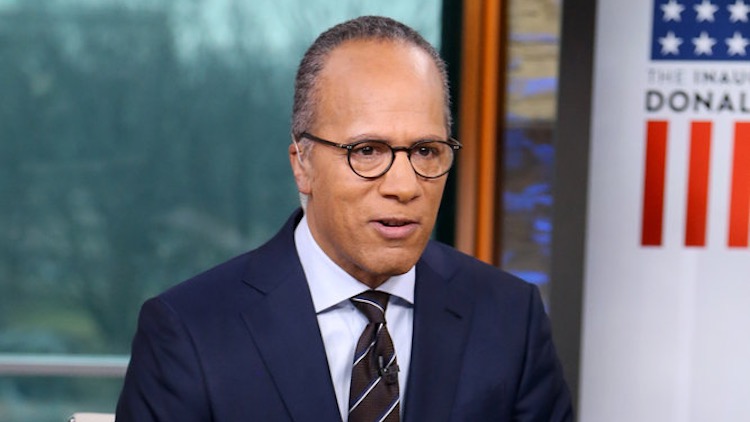SMI: National TV Ad Spending Flat in Second Quarter

National TV advertising spending was basically flat in the second quarter, according to the latest figures from research company Standard Media Index.
SMI says TV spending was down 0.8% from a year ago, with cable networks dropping 4% and broadcast networks up 4% in the quarter. The swing from broadcast to cable largely reflects the shift in the Final Four of the men’s college basketball tournament to CBS from Turner in April.
In June, the national TV market was down 0.5%, with broadcast off 2% and cable edging up 0.4%.
A large part of broadcast’s decline was caused by comparisons to last year when the Copa América Centenario aired on Univision. Without the soccer tournament, Univision’s revenues were down 35%.
Taking Univision out of the equation, the rest of the broadcast networks registered a 2% increase in June, led by Fox, which was up 9% thanks to increased spending on the U.S. Open.
News ratings were big and ad revenue followed during the quarter. Ad spending in news programming on broadcast and cable was up 16%, according to SMI.
The cable news networks registered an 18% gain, with MSNBC jumping 40%, CNN rising 21% and Fox News up 11%. The most expensive spots on cable news aired during Fox News’ Tucker Carlson Tonight. Units averaged $13,799, up 13% from what The O’Reilly Factor cost a year ago. Ad revenue for Hannity was up 53% as the price of 30-second ads rose 59% to $11,237 from a year ago.
Broadcasting & Cable Newsletter
The smarter way to stay on top of broadcasting and cable industry. Sign up below
Ad revenue generated by CNN’s The Situation Room rose 33% and The Lead with Jake Tapper was up 46%.
MSNBC’s Rachel Maddow was up 74% in revenue as unit costs rose 60% to $4,193 per 30 seconds. The Last Word with Lawrence O’Donnell’s revenue was up 82% in the quarter.
In broadcast news, ad revenue for CBS This Morning increased 32%. Spots on the show rose 28% to $20,400.
NBC Nightly News revenues were up 8.4%, the biggest gain among the evening newscasts. The NBC show also generated more revenue than ABC’s World News Tonight and CBS’ Evening News.
“Despite some ratings challenges, the national TV market continues to hold up strongly. The results we are seeing demonstrates that national TV continues to command the dominant position for major brands as they look for guaranteed, quality, and engaged audiences, as well as the return on investment these deliver,” said James Fennessy, CEO of SMI. “The standout performers for the quarter continue to come from the News genre, jumping 16%, which is hardly surprising given the fodder Washington serves up on a daily basis.”
During the quarter, ad revenues from entertainment programming were flat and sports were down 8% because of fewer games during the NBA playoffs and finals. Revenue for the five-game NBA Finals was down 9% from last year, when the series went the full seven games.
NHL revenue was up 7% as the same number of games was played this year and last year.
Spending on the U.S. Open generated 14% more revenue than last year for Fox.
Broadcast primetime revenues were down 4% in the quarter. The Bachelorette powered ABC to a 19% increase in the quarter. The reality show by itself was up 22%. ABC also saw gains from its game shows, including Celebrity Family Feud, which got $116,498 per spot, and The $100,000 Pyramid, which got $111,237 per 30 seconds.
Primetime revenues for the Big Four broadcast networks were up 9% in June.
For the quarter, the biggest ad revenue gains in cable were at HGTV (up 15%); E!, up 8%; and Food Network, up 2%.
ESPN was down 10% and general entertainment networks including AMC, TBS, A&E and USA showed smaller declines.
Movies studios cut their TV spending in the quarter by $116 million or 16%. Spending on autos was down 6% or $60 million.
Spending on prescription drug advertising was up 11%.
Consumer electronics makers increased spending by 23%, with most of the additional spending going to broadcast.
Overall, across all media, ad spending was up 3.8% in the quarter.
Ad spending on digital media was up 11% in the quarter. Amid concerns about keeping ads in brand-friendly environments, spending on non-premium digital video was down, with YouTube in particular off 15% in non-programmatic revenue. Premium video showed double digit increases, with Hulu up 30% and video from the TV networks up 11%.
“The market continues to ask big questions around non-premium video, and the results are now striking. Non-premium video slumped more than 15% for the quarter, while premium content platforms, like Hulu and the TV networks, were able to book significant, double digit gains,” said Fennessy. “Quality and environment is the number one imperative for brands today and the major network groups look like they are successfully swinging this important battle back in their favor.”
Radio, magazine, print and out-of-home were all down in the quarter.
SMI gets its data from the ad trafficking computer systems at major media agencies representing about 60% of all U.S. spending.
Jon has been business editor of Broadcasting+Cable since 2010. He focuses on revenue-generating activities, including advertising and distribution, as well as executive intrigue and merger and acquisition activity. Just about any story is fair game, if a dollar sign can make its way into the article. Before B+C, Jon covered the industry for TVWeek, Cable World, Electronic Media, Advertising Age and The New York Post. A native New Yorker, Jon is hiding in plain sight in the suburbs of Chicago.










